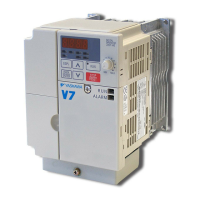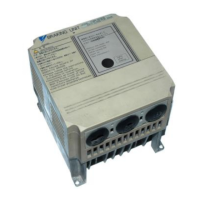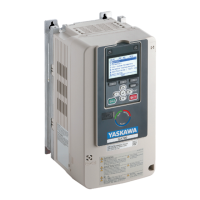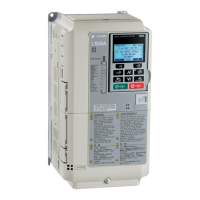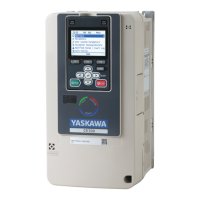
Do you have a question about the YASKAWA CR700 and is the answer not in the manual?
| Model | CR700 |
|---|---|
| Category | DC Drives |
| Protection Class | IP20 |
| Output Power | 0.5 to 300 HP |
| Horsepower Range | 0.5 - 300 HP |
| Communication Interface | RS-485 |
| Protection Features | Overcurrent, Overvoltage, Short Circuit |
Defines the purpose and scope of the drive's application.
Details the warranty terms and conditions for the product.
Outlines Yaskawa's limitations of liability regarding product use.
Explains signal words used in the manual for hazard identification.
Provides essential safety guidelines for handling and operating the drive.
Explains how to interpret the drive's model number from its nameplate.
Illustrates the keypad's modes and menu structure for operation.
Specifies correct mounting orientation and clearance requirements for cooling.
Instructions on safely using hanging brackets for drive installation or removal.
Procedures for safely removing and reattaching drive covers for inspection or wiring.
Provides a visual representation of the drive's standard wiring configuration.
Step-by-step guide for wiring the main power circuit terminals.
Specifies recommended wire gauges and torque values for main circuit connections.
Details wire gauge and torque specifications for control circuit wiring.
Explains the function of switches and jumpers for I/O adaptation.
Explains settings for digital and analog input/output signals.
Guides the user through the initial setup process for the drive.
Demonstrates how to modify drive parameter values for application setup.
Instructions to prevent the initial setup screen from appearing on startup.
Explains how to use predefined application presets for drive configuration.
Describes the available control methods for motor operation.
Details the process of automatically tuning the drive to the motor.
Lists and describes common drive parameters for application setup.
Information on identifying, resetting, and resolving drive faults.
Lists common minor faults and alarms with their causes and solutions.
Explains errors caused by incorrect or conflicting parameter settings.
Details errors encountered during the auto-tuning process and their resolution.
Lists the supported control methods for motor operation.
Describes the various protection features built into the drive.
Specifies the environmental conditions for drive installation and operation.
Confirms compliance with the CE Low Voltage Directive.
Precautions for protecting open-type drives from external debris.
Illustrates a wiring example for CE Low Voltage Directive compliance.
Details wire gauge and torque specifications for compliance with European standards.
Guidance on selecting and connecting input fuses for branch circuit protection.
Information regarding compliance with the EMC Directive.
Procedures for installing the drive to meet EMC Directive requirements.
Instructions for enabling or disabling the drive's internal EMC filter.
Lists recommended external EMC noise filters for drive models.
Information on installing DC reactors for harmonic suppression.
Specifies the permitted installation location based on UL standards.
Details ambient temperature ranges for drive operation according to enclosure type.
Instructions for correctly wiring the main circuit terminal block according to UL standards.
Important notes and precautions for wiring the main circuit terminals.
Guidance on using UL-approved closed-loop crimp terminals.
Lists recommended fuses for branch circuit protection according to UL standards.
Wiring requirements for control circuits according to NEC and CEC standards.
How to configure motor overload and overheat protection settings.
Details the presence of hazardous substances as per regulations.
Information on hazardous substances contained within the product (Chinese).
Technical specifications and requirements for the safe disable input.
Critical safety precautions and warnings related to the safe disable function.
Guidance on how to use and implement the safe disable function.
Information on recycling and disposal according to the WEEE Directive.

